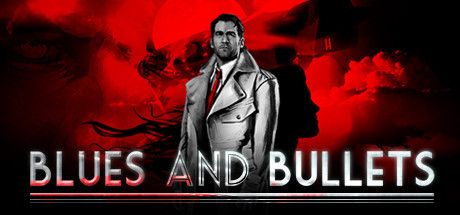- Format: Xbox One (version reviewed), PC
- Unleashed: Out Now
- Publisher: A Crowd of Monsters
- Developer: A Crowd of Monsters
- Players: 1
- Site: http://www.bluesandbullets.com/
- Game code provided by PR
Blues and Bullets is… well, it’s not as easy to categorise as it first appears – which is a good thing. You wander around being prompted to press A to look at things, there are a few QTEs, and you have dialogue/reaction options; which hints at a modern Telltale-esque adventure game. By and large that’s what it is, but it confidently strides off the beaten path in ways which set it apart.
You are Eliot Ness – yes, the Eliot Ness. Ness had a fascinating life, which took a tragic nosedive in his later years. The version of him here is largely a broad sketch from his high points, in a sort of alternate history following Capone’s imprisonment. Now retired he runs a diner, but is soon unofficially drawn into investigating a series of child kidnappings somehow tied to cultists. Despite the original story, a series of historical people and places are referred to or directly included.
Unsurprisingly this includes Al Capone. Two things are notable about Capone in this first episode; (a) he ends up forging an unlikely alliance with Ness, and (b) he looks like somebody has hurriedly replicated his face with plasticine. Capone aside, the character models are generally impressive in terms of detail and semi-realism. Try to avoid making Ness run though; his running animation is unintentionally hilarious.
The game as a whole is presented in an immediately, and consistently, striking art style. The 40s/50s-style soundtrack lays the foundation for the noir atmosphere, which is strengthened greatly by the black-and-white graphics. The only other colour used almost without exception is red, giving a bloody tint to the experience. This also allows the lighting to look all the more impressive.

Visually, the world is constantly engaging.
Red is also used to subtly direct the player to the next clue or destination, not that this is really required. In terms of the physical path it’s an incredibly linear experience, with the player even denied control over the camera (though such control is, fortunately, not needed). This works to the game’s advantage at certain points, though; the few times Ness enters into a gunfight, movement and cover are handled for you, with your task being to simply pop out and shoot the bad guys without staying in the line of fire for too long. You can then continue with the story.
At this early stage, it’s difficult to say how the story as a whole holds together, but the script is so far solid. There are a handful of good witty lines, usually delivered by Capone’s trusted man Milton. We like Milton. He’s around for a lot of the first episode, and hopefully he’ll feature heavily in the rest of the series, too.
Be aware that this is a game whose primary concern is telling you its story. Aside from the aforementioned simplified shooting sections, the most ‘gamey’ section of this episode is when you come across a grisly murder. You are then tasked with scouring the area for clues until you have enough information to piece together exactly what happened and how, which you do by selecting clues to slot into various sections of a decision tree. In all honesty this requires little skill; the game won’t let you slot an incorrect clue into place. This is just as well, as the links between a few of the clues and their respective conclusions are tenuous at best.

Despite the use of historical figures, surreal moments like this strengthen the experience as a whole.
As for the decisions you get to make, the first episode is too early to draw any conclusions on their significance. However, the very first decision you make has a post-credits consequence that, regardless of whether or not it feeds into the next episode, is tense and surprising.
Our biggest fear for the series at this point is the hint that there may be supernatural forces at play, which will have to be handled with extreme skill to avoid their introduction causing the whole experience to fall apart – if that is indeed what’s going to happen. Regardless, the first episode has us intrigued, and we’re keen to continue the story. At two hours or less, it’s hardly an epic adventure; but it’s well worth the £3.99 to get a taste. If you do like it, you’ll likely immediately decide to see it through to the end of the series.




Comments